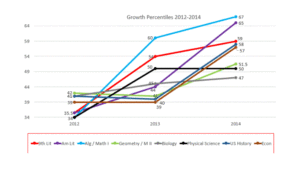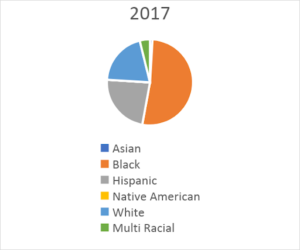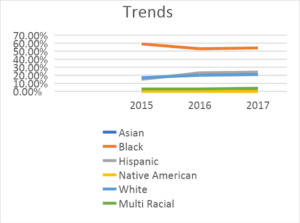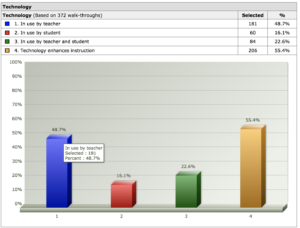 username@email.com
username@email.com
Objectives:
In this workshop you will familiarize yourself with:
Teacher preparation programs lay the foundation for professional teaching knowledge. Teachers are expected to participate in ongoing professional development as a part of their practice. The term “professional learning” covers all types of learning experiences related to teaching, whether it is a brief “sit and get” session, a weeklong conference, or a series of lectures. While there are many different delivery models for professional development, there are just as many content areas for teachers to develop their knowledge and skills. While some professional development is appropriate for any faculty, professional development is most effective when it meets a specific need of a particular group.
School administrators are often faced with the task of reviewing and processing large amounts of data in order to identify needs and select appropriate professional development activities for a staff. Yet more and more systems are moving toward teacher evaluation systems which place a priority on teachers participating in professional learning or growth plans, professional learning based on goals developed for the individual teacher by the individual teacher and his or her supervising administrator. With this trend toward more teacher involvement in identifying professional development needs, teachers need to be familiar with the process of how to select learning experiences that align with the school community needs. Many systems utilize a continuous improvement cycle in order to ensure that their school community focuses on systematic problem solving.

In this phase of the continuous improvement cycle, educators review data from a variety of sources in order to look for gaps. Needs are identified by analyzing the data and prioritizing the needs of the school. Schools may select needs based on:
Data is often disaggregated into appropriate subgroups and graphed or visualized other ways to help educators identify the degree of disparity between groups. School primarily examine four types of data: achievement, demographic, process, and perception. Educators need to look at all types of data to gain an understanding of the whole picture of school performance.


Above are two representations of achievement data. The graph on the left is a line graph that represents student growth scores over three years in eight different subject areas. The bar graph on the right follows three years of performance data on common district assessments in four different English Language Arts classes. The graph on the left gives us a quick representation on how much progress teachers are making with students in each subject. The bar graph on the right gives us similar information and can be helpful when there aren’t the same number of data points for all areas being examined. Both of these types of representations can be useful in helping educators find gaps in performance and predict trends.


The bar graph below depicts process data on the use of instructional technology in a moderately sized high school. This particular data was collected over time to monitor the use of instructional technology after a professional development.

| Strongly Disagree | Disagree | Neutral | Agree | Strongly Agree | |
| My child’s school is clean | 5% | 15% | 10% | 45% | 25% |
| My student is safe at school | 2% | 5% | 18% | 25% | 50% |
| My child is happy at school | 2% | 13% | 5% | 25% | 55% |
| My child’s teacher communicates important information | 2% | 5% | 5% | 63% | 25% |
| Teachers at school are accessible to parents | 5% | 25% | 30% | 35% | 5% |
The perception data table above shows a summary of responses from a parent survey. The benefit of perception data is that you can collect data with any questions you like. This particular survey was conducted using a Likert scale for responses. Perception can also be collected using a rubric style response.
In our everyday life data is being collect on our behaviors all the time! When we watch a video online, we add to the view count. When we “like” an image on social media, we provide perception data. When we pay with our credit card, we are providing data to retailers, manufacturers, and financial companies. Data is a part of our culture, and it drives so much of what our culture is exposed to. Data is how companies know what people like and don’t like, how much to produce, what to charge, who to advertise to, and how they know what works for them. As educators we need to know what’s working for us, how much of it to use, and when. Data on our effectiveness is just as important as everyone else’s!
It is critical for educators to seek out technology solutions to make data analysis as efficient a process as possible, and to make the data accessible to the larger school community. As you can imagine, most schools have an abundance of data. In a school of 1000 students, each student will have at least five demographic factors and five achievement factors. At the minimum, that is 10,000 raw data points. It is unreasonable to imagine that schools are collecting, aggregating, disaggregating and calculating statistics by hand. Several different tools may be necessary for schools to interpret and analyze data. Computers to perform calculations, spreadsheets to sort information and create visual representations of data, databases to student information system databases that house and extract demographic and achievement data, software that specializes in collecting survey responses, and even software to track tardiness to school. Educators rely on seeking out and using available technology solutions to make the data accessible and meaningful.
Connect with your media specialist and instructional technology specialist to get support in finding technology solutions to manage data.
Once you’ve crunched the numbers, it’s time to set a goal and develop an action plan. Educators must collaborate and prioritize their needs and develop a plan that supports attaining a specific goal.
Goal setting is a practice that sounds easy but takes some skill. When we are working to set goals for a school community, it is important that we are setting goals that are specific, measurable, attainable, relevant, and time bound (SMART goals). SMART goals allow a school community to have a clear understanding of what goal they are trying to reach, when they need to reach it by, to be able to measure progress along the way, and to feel that it is something worth working for. As a teacher you will spend time each year participating in goal setting for the school in your school improvement process, for your PLC in your small group learning community, for yourself, and for your students. The goal setting is the foundation for many plans throughout the school and district. SMART goals drive district improvement plans, IEPs, student support team plans, and in some districts teacher bonuses.
Once the goal is set, it’s time to review research in that area and choose a best practice that is effective in improving the area of need. Choosing research-based strategies allows schools to be able to anticipate a certain degree of success in attainment of their goal.
Once the plan has been formalized it’s time to take action! Implementing the plan is simply following the steps and the timeline.
Once the plan has been launched, monitoring will begin. Monitoring includes periodic checks on the progress on the steps of the plan, and on the attainment of the goal. Monitoring can be informal assessment, checklists, or formal reporting.
As the formative and summative data about goal attainment comes in, it’s time to revisit the cycle by analyzing the data and identifying needs.
The continuous improvement cycle is a common theme throughout educational practice. As you develop and attain more knowledge and skills in educational practice you will begin to notice the continuous improvement cycle utilized again and again.
Professional Learning Plans (PLP) begin with the teacher reviewing and reflecting on school and/or classroom data and selecting and creating goal. PLP is usually developed by the teacher in consultation with the administrator. Goals can target an individual teacher’s needs, and / or school or district wide initiatives. These professional learning goals drive the professional learning plan, which outlines the teacher’s and school’s part in meeting the professional learning goal. Professional learning plans differ from remediation plans in that they are not a corrective measure for struggling teachers, but they are instead a required plan for all educators to ensure that teachers remain life-long learners and that they have the opportunities to develop their areas of strength, weakness, and preference.
SAMPLE Professional Learning Plan
Tara Teacher Professional Learning Plan for the 2017-2018 School Year
Data sources reviewed: Previous standardized test scores, Lexile scores, walkthrough data
Professional Learning Goal:
In order to increase my standardized test scores by 5% I will add the use of “clickers” in my classroom to increase student opportunity to respond to questions and collect formative student data. My goal is to collect formative assessment data with clickers once a week.
Professional learning activity:
Fall: I will attend a training with the media specialist on the use and maintenance of the multiple response clicker system and I will observe the use of these clickers in another teacher’s classroom.
Fall / Winter: I will research the use of clickers for formative assessments in the area of Mathematics. I will read and reflect on at least three professional articles about teachers who have implemented this practice.
Winter: I will work with a member of my team to covert our weekly formative assessments to clicker-based assessments.
I will begin collecting data with the clickers weekly.
Resources and Supports:
I will need access to the clicker system at least once per week. I will need to meet with the media specialist for at least one training session on the clickers and have access to him for support periodically.
Professional Development Plan (PDP) is a plan developed by an administrator for a teacher whose practice reflects that they are struggling in a particular area or areas. The Professional development plan differs from the professional learning plan in that it is an administrator developed plan that is intended to correct something in the teacher’s practice that is negatively impacting their evaluation. A professional development plan is part of the evaluation process and intended to do set clear expectations and supports for a teacher who is having difficulty. Professional development plans are often required by teacher evaluation systems for teachers who score below a certain total or below a certain score in a specific area. For instance, if the teacher evaluation platform designates total scores between 15-20 are proficient teachers, any teacher at 14 or below may be required to have a development plan. Also, if an evaluation system uses a scoring system of 1-4 for each area, and a teacher scores a 1 in a particular area (though their overall rating may be proficient) a professional development plan may also be required. While professional development plans are corrective, and considered remediation, they are intended to provide support and clear expectations, so a teacher can grow.
If an administrator puts you on a remediation plan, don’t be shy! Be clear in asking for the supports that you need to be successful. Consider asking for resources, training classes, professional coaching, or other a.
SAMPLE Professional Development Plan
Tony Teacher Professional Development Plan for School Year 2017-2018
Start Date: October 2017
End Date: January 2018
Area(s) for improvement: Classroom management
Educator actions: Mr. Teacher will take a classroom management course of at least 20 seat hours. Mr. Teacher will observe two other teachers’ classrooms (identified by administration) and submit a written reflection of both observations to his supervising administrator. Mr. Teacher will keep a journal of the different classroom management strategies he uses in class each day and write weekly reflections on their effectives. Mr. Teacher will consult with the behavior specialist every two weeks and make his journal available for behavior specialist review. Mr. Teacher will schedule monthly conferences with his administrator to debrief her on his progress. At each meeting Mr. Teacher will submit his journal for review.
Resources provided by the system: Classroom management class at the county office, behavior specialist consultation, access to two other teachers’ classrooms for observation, monthly conferences with administrator.
Timeline for implementation: Mr. Teacher will complete the classroom management class by the end of November. He will begin daily entries in his journal during week two of his classroom management course. Mr. Teacher will begin conferences with his supervising administrator in October. Mr. Teacher will consult with the behavior specialist beginning upon completion of the classroom management course (expected in mid-November).
Documentation and Deliverables: Journal, Documentation of course completion, record of conferences with behavior specialist, record of conferences with administrator
The Professional Learning Community, or PLC, is a group of people that meet regularly and examine data with the purpose of making changes to improving student outcomes. PLCs can be content area groups, grade level groups, or any combination of people from the school community that come together on a regular basis to review data and inform practices that should lead to better outcomes for students.
PLCs have a goal. Common goals for PLCs include determining what to teach when, creating lesson plans, or developing common assessments, or improving behavior management. All PLCs share a common purpose of improving student learning experiences and performance. An example of one school’s PLC process is described below:

The PLC structure described above is designed to be used by the school’s common course teacher PLCs at least once per week.
Grade level and content area PLCs often focus on examining student and work and achievement data, discussing best practices and unexpected outcomes. Teachers participating in PLCs will practice skills of analyzing data, reflective practice, and school improvement.
PLCs should be large enough for people to offer one another feedback, support, and to collaborate on problem solving, and be small enough that everyone’s needs and concerns can be routinely addressed. PLCs function best when there is a structure to the meetings, so that PLCs can stay focused on completing their work and meeting their purpose.
It is not unusual for PLCs to produce work such as common lesson plans, common assessments, remediation plans, acceleration plans, and intervention plans. PLCs may have the responsibility of reviewing RTI data and moving students through the school’s tiers of support.
PLCs should meet regularly, with the frequency appropriate to their purpose. If the PLCs task is to examine student work and develop lesson plans, the PLC may meet once or twice a week.
One of the most critical endeavors that a teacher PLC embarks upon is the analysis of student work. Examination and analysis of student work is critical to making effective instructional decisions. Performing this task as a group helps teams to build interrater reliability and build consensus in standards alignment and analysis of rigor. Using protocols can be helpful in keep a group focused on generating specific information when examining student work. There are several protocols available for examining student work as an individual or with a group. Some protocols are for extensive and deep thinking and analysis, and others take a short amount of time and yield a small amount of information. Examining student work is often the primary task of the PLC, analysis of the work provides formal formative data that is critical to designing the next lessons so that all learners have chance to succeed.
Some guiding questions for student work analysis:
Giving and receiving feedback is critical skills for PLCs. Over the course of their practice teachers will participate in giving and receiving feedback with their peers in several areas. Teachers should be prepared to participate in feedback sessions regarding their professional practice, student and teacher data, identifying needs, professional learning, planning lessons, and when analyzing student work.
The feedback process can be intimidating at first. People giving feedback may be afraid of hurting someone’s feelings or exposing their own insecurities during this process. The person receiving feedback can feel insecure, uncomfortable, and judged. In order to engage in professional feedback with peers, and develop and maintain collegial relationships, it is important that the feedback process have some clear expectations and processes. This allows the presenter and receiver to be clear about their roles, and the limits of that roles. Structured processes or protocols can be helpful in creating clear expectations and supporting a safe space for feedback sessions. Protocols can be found in literature and on the internet, or you can structure your own. A good protocol will:
The School Improvement committee is another type of PLC that you will find in most schools. The School Improvement Plan (SIP) aligns goals with the vision and mission of the school, and the needs of the school. Schools assemble diverse teams of school community members to apply the continuous improvement cycle to the school program as a whole. Teachers are an integral part of the School Improvement PLC. Teachers are needed to help identify and develop goals for the plan, and they are immensely critical in determining what resources, training, and supports are needed in order to meet these goals. Teachers have great influence over the school improvement plan, and great influence over the outcomes. Teachers will participate in every part of the SIP including goal setting, plan development, implementation and monitoring.
How do you apply the continuous improvement cycle in your PLC?
What is the common purpose of all PLCs?
What types of data should be considered when developing goals for professional learning?
What are the differences in a PDP and a PLP?
What are the important factors in making peer feedback comfortable?
The following is a list of resources that relate to the topic of Professional Development
Banks, F. and Mayes, A. Early Professional Development for Teachers. David Fulton Publishers, 2001. Available from Amazon.com
Dufor, R. and Eaker, R., Professional Learning Communities at Work: Best Practices for Enhancing Student Achievement. Solution Tree Press, 1998. Available from Amazon.com
Dufor, R. and Dufor, R. Learning by Doing: A Handbook for Professional Communities at Work – A Practical Guide for PLC Teams and Leadership. Solution Tree Press, 2016. Available from Amazon.com
Joyce, B, and Calhoun, E. Models of Professional Development: A Celebration of Educators. Corwin Associates, 2010. Available from Amazon.com
Lieberman, A. and Miller, L. Professional Development that Matters. Teachers College Press, 2001. Available from Amazon.com
Martin, L. and Kragler, S. Handbook of Professional Development in Education: Successful Models and Practices, PreK-12. The Guilford Press, 2014. Available from Amazon.com
McLaughlin, C. Teachers Learning Professional Development and Education. Cambridge, 2013. Available from Amazon.com
Reeves, D. Transforming Professional Development into Student Results. ASCD, 2010. Available from Amazon.com